
Patellidae is a taxonomic family of true limpets, marine gastropod molluscs in the superfamily Patelloidea. (The superfamily Patelloidea should not be confused with the similar-sounding genus of true limpets Patelloida which is in the family Lottiidae within the superfamily Lottioidea, also part of the Patellogastropoda.)

Cellana is a genus of sea snails or limpets, marine gastropod molluscs in the family Nacellidae, the true limpets.

Patella is a genus of sea snails with gills, typical true limpets, marine gastropod mollusks in the family Patellidae, the true limpets.
Scutellastra natalensis is a species of sea snail, a true limpet, a marine gastropod mollusk in the family Patellidae, one of the families of true limpets.
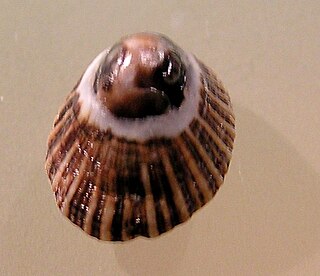
Scutellastra aphanes is a species of sea snail, a true limpet, a marine gastropod mollusk in the family Patellidae, one of the families of true limpets. It is endemic to South Africa.

Scutellastra argenvillei or Argenville's limpet, is a species of sea snail, a true limpet, a marine gastropod mollusk in the family Patellidae, one of the families of true limpets.

Scutellastra barbara is a species of sea snail, a true limpet, a marine gastropod mollusk in the family Patellidae, one of the families of true limpets.

Scutellastra chapmani is a species of sea snail, a true limpet, a marine gastropod mollusk in the family Patellidae, one of the families of true limpets.
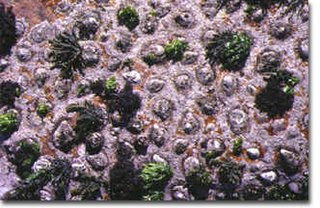
Scutellastra cochlear is a species of sea snail, a marine gastropod mollusc in the family Patellidae, one of the families of true limpets. It is commonly known as the snail patella, the pear limpet or the spoon limpet and is native to South Africa. It often grows in association with the crustose coralline alga Spongites yendoi and a filamentous red alga which it cultivates in a garden. It was first described by the malacologist Ignaz von Born in 1778 as Patella cochlear.
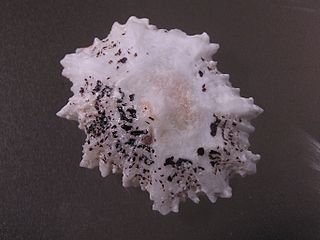
Scutellastra flexuosa is a species of sea snail, a true limpet, a marine gastropod mollusc in the family Patellidae, one of the families of true limpets.
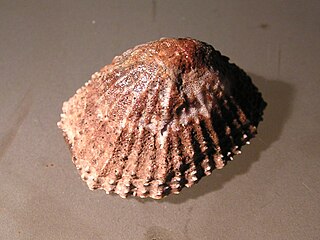
Scutellastra granularis is a species of sea snail, a true limpet, a marine gastropod mollusk in the family Patellidae, one of the families of true limpets.

Scutellastra kermadecensis is a species of true limpet, a marine gastropod mollusk in the family Patellidae. It is endemic to the Kermadec Islands.

Scutellastra laticostata is a species of sea snail, a true limpet, a marine gastropod mollusk in the family Patellidae, one of the families of true limpets.
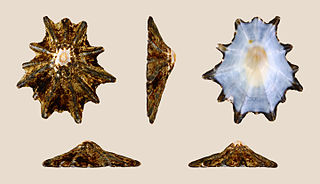
Scutellastra longicosta, the long-spined limpet or the duck's foot limpet, is a species of true limpet, a marine gastropod mollusk in the family Patellidae, one of the families of true limpets. It is native to the coasts of South Africa where it is found on the foreshore. It cultivates a species of crustose brown algae in a "garden".
Scutellastra miliaris is a species of sea snail, a true limpet, a marine gastropod mollusk in the family Patellidae, one of the families of true limpets.
Scutellastra obtecta is a species of sea snail, a true limpet, a marine gastropod mollusk in the family Patellidae, one of the families of true limpets.
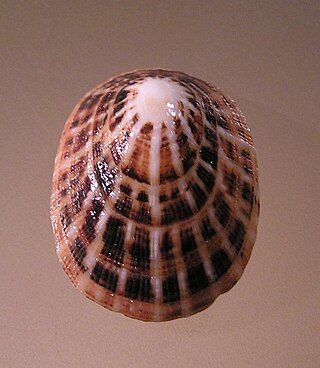
Scutellastra peronii, also known as Peron's limpet and scaly limpet, is a species of true limpet, a marine gastropod mollusk in the family Patellidae.
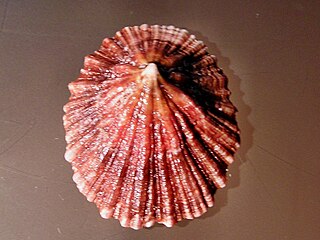
Scutellastra tabularis is a species of sea snail, a true limpet, a marine gastropod mollusk in the family Patellidae, one of the families of true limpets.

Scutellastra tucopiana is a species of sea snail, a true limpet, a marine gastropod mollusk in the family Patellidae, one of the families of true limpets.
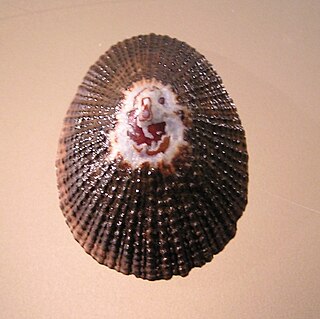
Scutellastra is a genus of sea snails with gills, typical true limpets, marine gastropod molluscs in the family Patellidae, the true limpets.
















